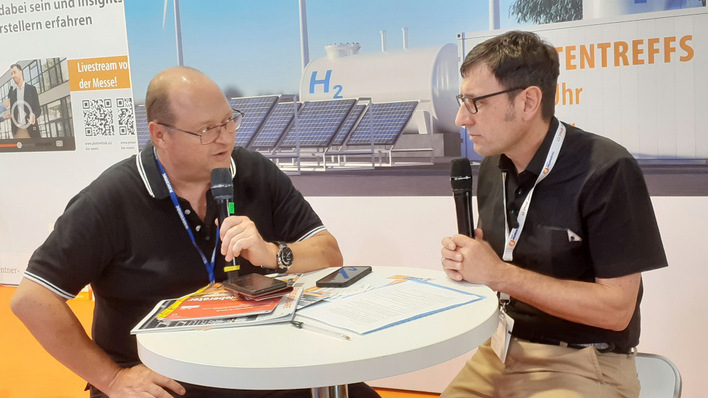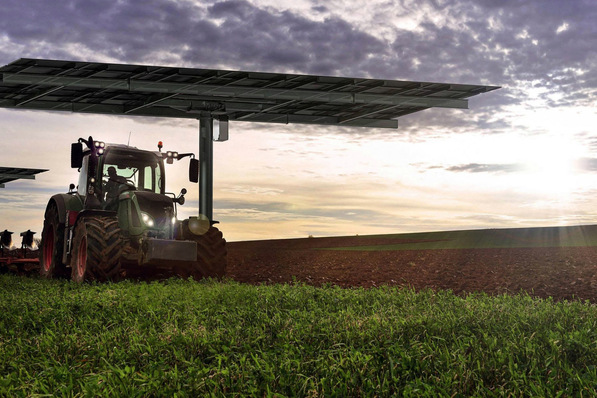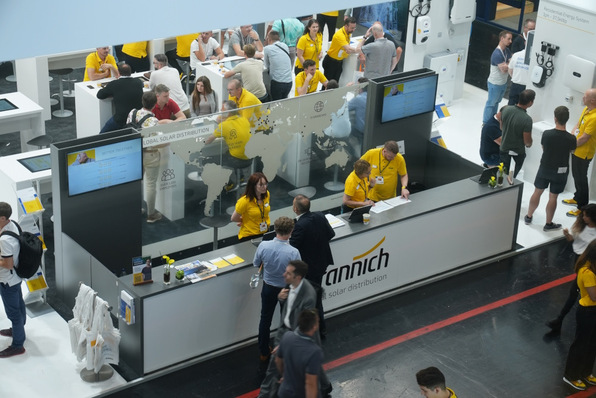An industry cannot move forward without innovation. That’s why companies have been rewarded for their pioneering solutions and projects with the storage industry’s innovation prize, the ees Award, since 2014. This year, the ees, Intersolar, and The smarter E Award will be presented online on July 21, 2021 as part of The smarter E Industry Days. Innovation within companies reveals the industry trends – think environmentally friendly battery cells, smart transport and software solutions, and component modularization – and covers the entire supply chain for battery and energy storage technology.
Environmentally friendly batteries and smart transport and software solutions
Energy storage systems and batteries have huge potential for optimization and savings in transportation and installation in particular. The modularization of heavy components for transportation and installation cuts down on the manpower required, while also saving on resources needed for repairs. With a shift to pre-assembly and smart transport and software solutions on board, installation is simplified and the amount of packaging needing to be disposed of at the installation site is reduced. Environmentally friendly battery cells are still very much on trend. Lithium-iron-phosphate cells or NMC cells with a lower proportion of cobalt are used in many storage systems. The future performance of a battery can now be predicted with a high degree of accuracy via cloud-based analyses of battery operating data.
Here are the ees Award finalists for 2021:
• Commeo GmbH (Germany): Commeo energy storage solutions make up a flexible modular system used to build a battery storage system. A choice can be made between two cell formats and four different cell types. The selection and connection define the potential capacity and allow for a high-voltage or low-voltage system. Control and communication blocks can be added to the system, which enables smart monitoring and can be integrated into standard switching cabinet architectures.
• Enphase Energy (Netherlands): Encharge is an AC-coupled storage system consisting of the Encharge 3T base unit with a usable battery capacity of 3.5 kilowatt hours (kWh) and 1.28 kilowatts (kW) of charging and discharging power. Three base units form one Encharge 10T storage system. The flexible system can be expanded, with the option to combine up to four systems. It is also possible to switch seamlessly to backup mode. An Encharge 3T features four micro-inverters that are highly reliable and easy to replace.
• Fenecon GmbH (Germany): The Fenecon Home storage system consists of the battery, BMS box, and FEMS box as stackable units. The FEMS box is the central connection box for the entire system, with connections for communication and so on. The FEMS monitoring and energy management functionality built into the storage system provide plenty of flexibility when it comes to the smart control of consumers from any manufacturer, such as heat pumps and charging points. The storage solution is compatible with hybrid inverters from GoodWe and KACO.
• Leclanché SA (Switzerland): The LeBlock large-scale storage system cuts down on the duration, complexity, and costs associated with installation and commissioning. The system is made up of multiple battery blocks and a combiner block used for connection and protection that houses a fluid cooling system for the batteries and an energy management system. Thanks to its modular structure, the LeBlock can be flexibly adapted to suit specific circumstances.
• LG Energy Solution (South Korea): LG Energy Solution uses a new NMC cell with a lower proportion of cobalt and higher energy density in its RESU Prime high-voltage storage solution. At the level of the battery pack, the energy density has been boosted by 20 percent, creating an extremely compact system with a large capacity. Transportation and set-up are simplified by the modular design and the reduced weight of the RESU Prime battery modules.
• LogBATT GmbH (Germany): The Safetybattbox XL Storage is designed for storing large battery systems weighing up to 1,000 kg securely. It can be operated by one person and its use is very flexible thanks to its internal height of 2.2 m. The Safetybattbox comes with features for passive firefighting, smoke filtering, and thermal insulation. It has already been tested with a battery with a capacity of 82 kWh with positive results.
• SAX Power GmbH (Germany): The SAX STORAGE system can be integrated into existing home photovoltaics installations. It has built-in power electronics boasting ultra-efficiency and does not require a conventional inverter. The system includes 120 iron-phosphate battery cells in a compact design. The technology makes it possible to disconnect faulty cells, guaranteeing high availability and durability for the system.
• Siquens GmbH (Germany): The Siquens Ecoport 800 is a fuel cell system with an electrical capacity of up to 500 watts that has been designed to replace diesel generators. The key advantage is that the Siquens Ecoport 800 is operated using standard methanol and has an overall electrical efficiency rating of 38 percent. It is used, for example, in the leisure sector (e.g. in boats and yachts) and to supply power for off-grid mountain cabins, office containers, building sites, telecommunications infrastructure, and traffic surveillance.
• TWAICE Technologies GmbH (Germany): The Battery Cloud Analytics Platform is a predictive analytics solution for battery storage systems from Twaice. The combination of operating data from a storage system, artificial intelligence, and lab tests makes it possible to define the status of a battery and predict how the battery will age and perform going forward. Operation can therefore be optimized to prolong the life span and indicators of a system failure can be picked up on in good time.
• Xelectrix-Power GmbH (Austria): The xelectrix Power Box XPB PRO RANGE is a versatile plug and play storage solution for supplying power inside and outside. Applications include grid support and off-grid operation with photovoltaics. Alongside the option of being used in a hybrid solution, this storage solution can be used to temporarily replace diesel generators if required for emergency back-up power or operation on a building site. The system has an efficiency level of as much as 96 percent and can be expanded with modules to move from 20 to 120 kWh. Iron-phosphate cells are used. (mfo)
Also interesting:
Battery cells: Artificial intelligence for environmentally friendly production
Researchers probe grid resilience using advanced batteries
Spain: 2 GWh liquid air long duration storage projects







